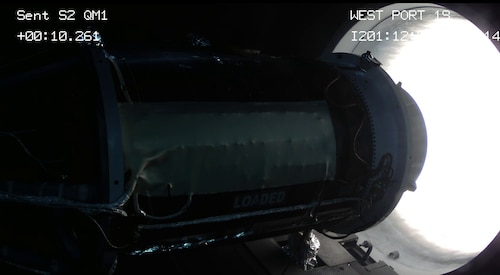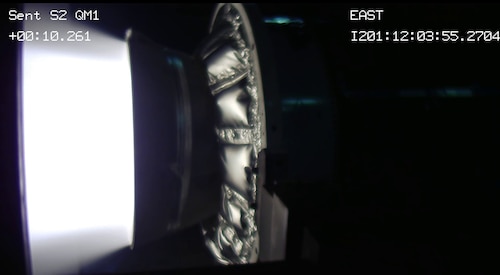The U.S. Air Force, in partnership with Northrop Grumman, completed a full-scale qualification test of the stage-two solid rocket motor for the LGM-35A Sentinel intercontinental ballistic missile, July 20, by the 717th Test Squadron at the Arnold Engineering Development Complex.
The test marks a critical milestone in the ongoing effort to modernize the nation's land-based nuclear deterrent. Conducted in a vacuum chamber to simulate high-altitude conditions, the test provided essential data on the motor's thrust, burn profile, and steering capabilities via its thrust vector control system.
"This test reflects our disciplined digital engineering approach and the continued momentum behind the Sentinel program," said Brig. Gen. William S. Rogers, Air Force program executive officer for ICBMs and director of the ICBM Systems Directorate, Air Force Nuclear Weapons Center. "We're not just testing hardware - we're proving that our models are accurate, our development timeline is achievable and the system will be ready to deliver when called upon."
The stage-two motor is one of three booster segments that make up the three-stage Sentinel missile. This test is part of a series intended to qualify the stage-two design and validate predictive performance models developed in a digital engineering environment. The data gathered from this test will be used to refine design elements and reduce technical risk as the program moves toward production.
The milestone follows the stage-one rocket motor test conducted in March at Northrop Grumman's facility in Promontory, Utah. That test verified motor performance and alignment with digital models, setting the foundation for the next phase of qualification testing.
"This isn't just about one motor test," Rogers said. "It's about building confidence - in our engineering; in our program schedule; and, most importantly, in our ability to deter aggression and defend the nation."








